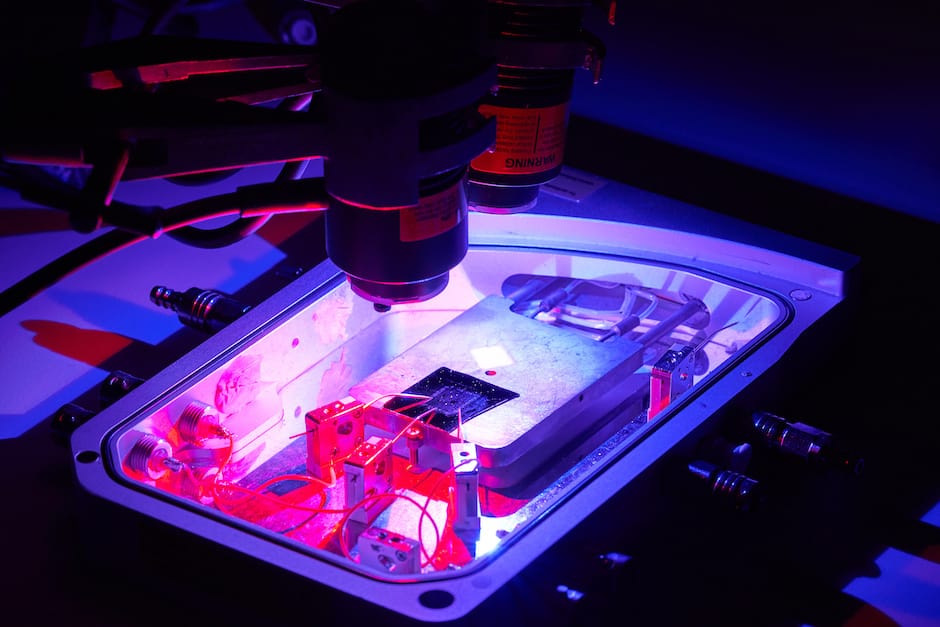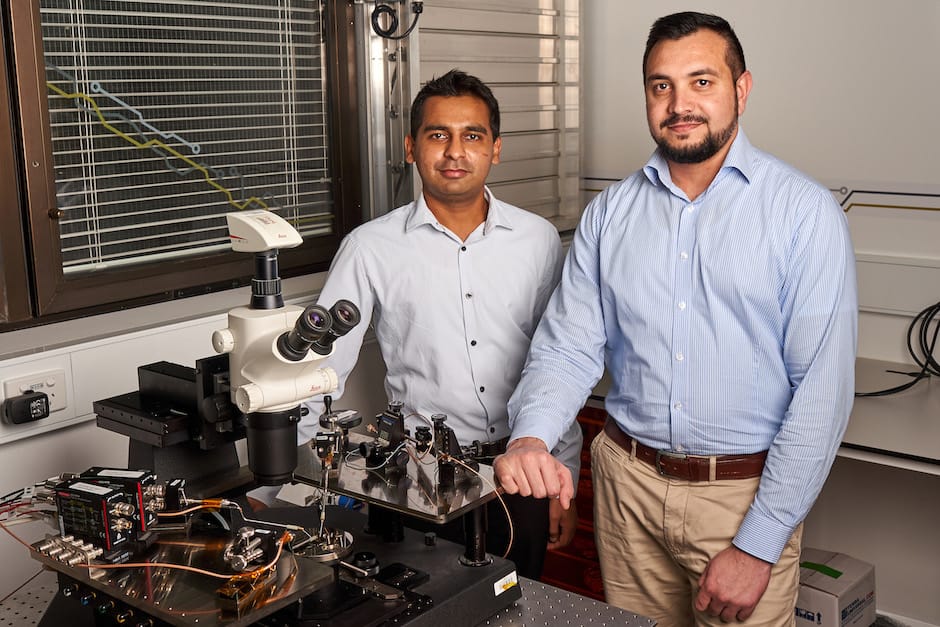Researchers from the Royal Melbourne Institute of Technology (RMIT) believe that their development could open the way to computers that can learn from their environment. In a paper in Advanced Functional Materials, the team from RMIT’s functional materials and microsystems research group, directed by Sumeet Walia explains how the function of the chip derives from an ultra-thin material whose electrical resistance changes in response to different wavelengths of light.

“Our optogenetically-inspired chip imitates the fundamental biology of nature’s best computer - the human brain,” Walia said. “Being able to store, delete and process information is critical for computing, and the brain does this extremely efficiently. We’re able to simulate the brain’s neural approach simply by shining different colours onto our chip. This technology takes us further on the path towards fast, efficient and secure light-based computing.”
In the brain, neural connections are formed when electrical impulses between cells reach a certain threshold level. At this point, neurons bind together, which is the beginning of the process to form a memory. In the RMIT chip, a film containing black phosphorus, an elemental material that tends to oxidise under ambient conditions, generating structural defects, generates a photocurrent when illuminated. Changing the wavelength of the illuminating light – that is, shifting its colour – causes the current to reverse direction. This polarity shift is the equivalent of binding or breaking the bond between neurons. This is akin to optogenetics, where light-induced modification of neurons cause them to switch on or off, enabling or inhibiting connections to neighbouring neurons.

So-called defect engineering is crucial to this technology. The team used the way that phosphorus atoms bind to oxygen as the black phosphorus oxidises in a similar way to how conventional electronics uses doped semiconductors to carry electric charge. “Defects are usually looked on as something to be avoided, but here we’re using them to create something novel and useful,” lead author Taimur Ahmed said. “It’s a creative approach to finding solutions for the technical challenges we face.”
The researchers have demonstrated that the chips can perform logic operations. Moreover, they are compatible with existing electronics and are suitable for integration into devices such as wearables.
According to Ahmed, the chips may have uses in medicine as well as in computing. “This technology creates tremendous opportunities for researchers to better understand the brain and how it’s affected by disorders that disrupt neural connections, like Alzheimer’s disease and dementia,” he said.




Poll: Should the UK’s railways be renationalised?
Rail passenger numbers declined from 1.27 million in 1946 to 735,000 in 1994 a fall of 42% over 49 years. In 2019 the last pre-Covid year the number...